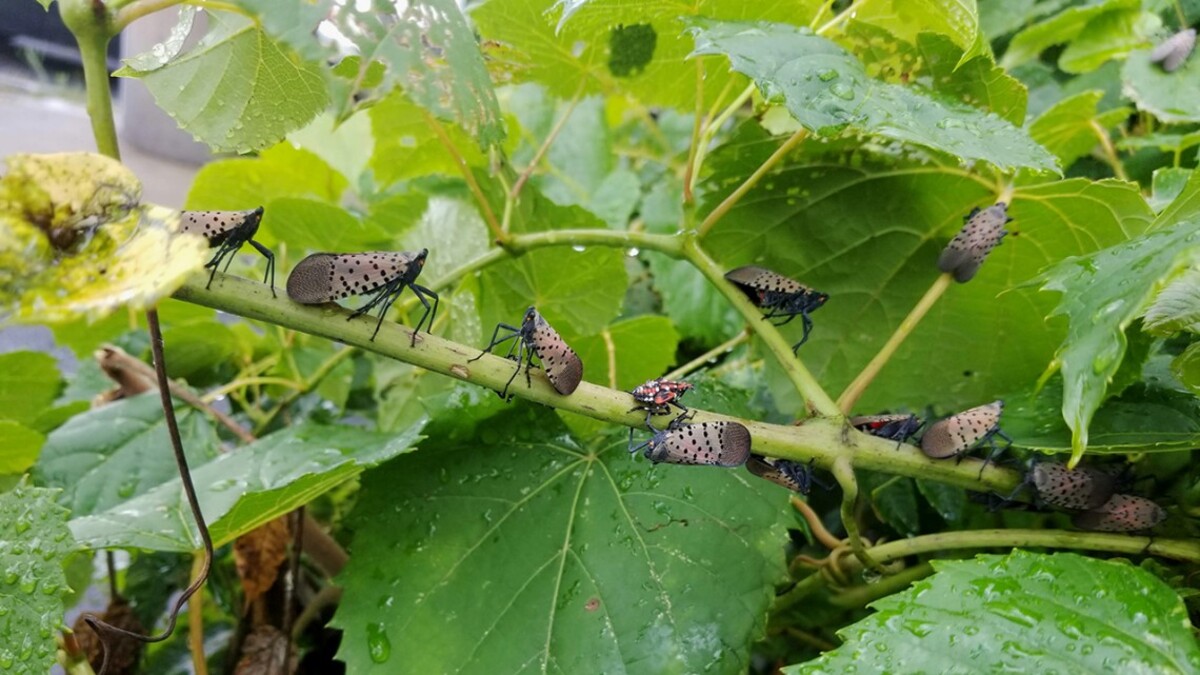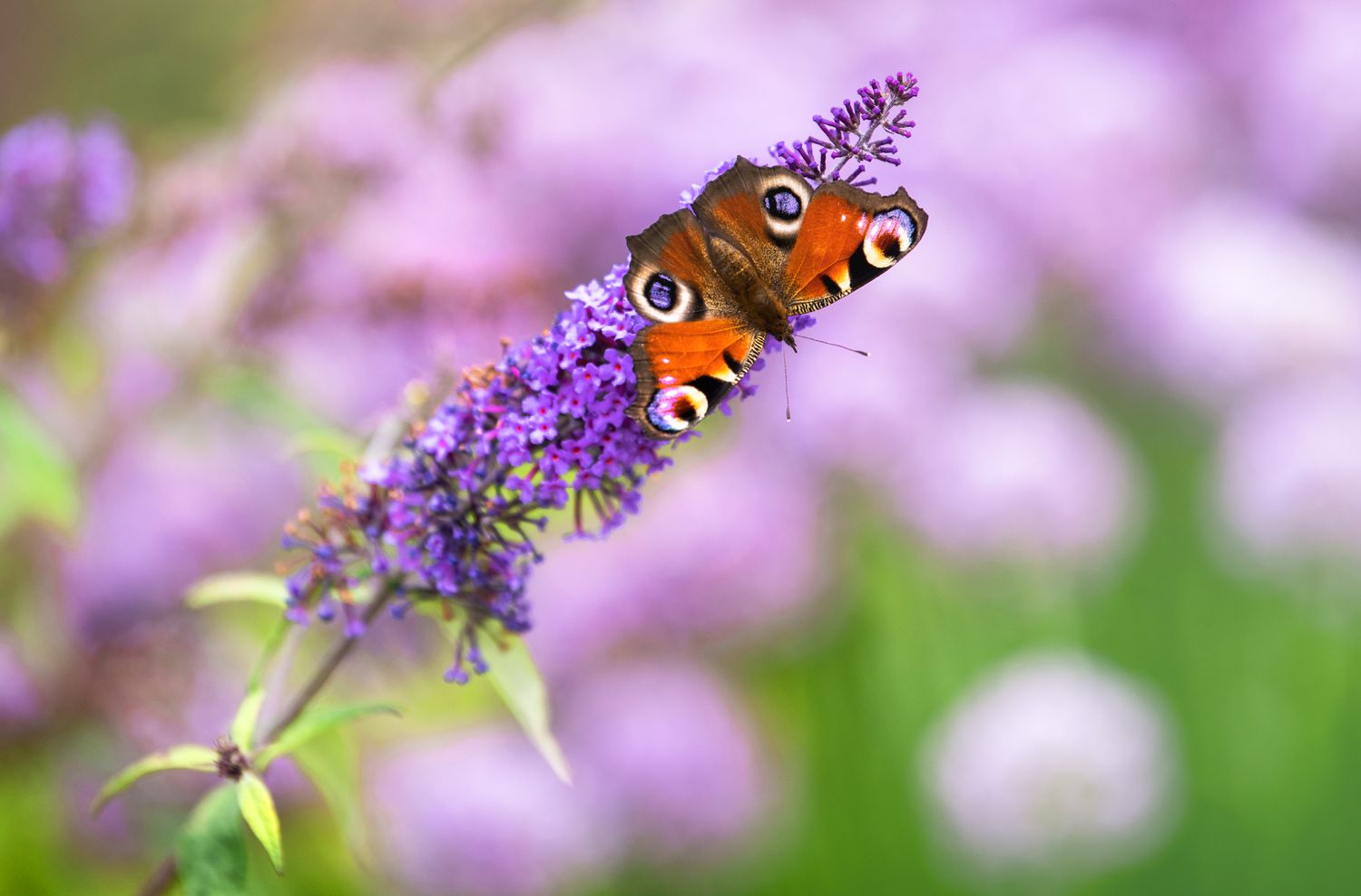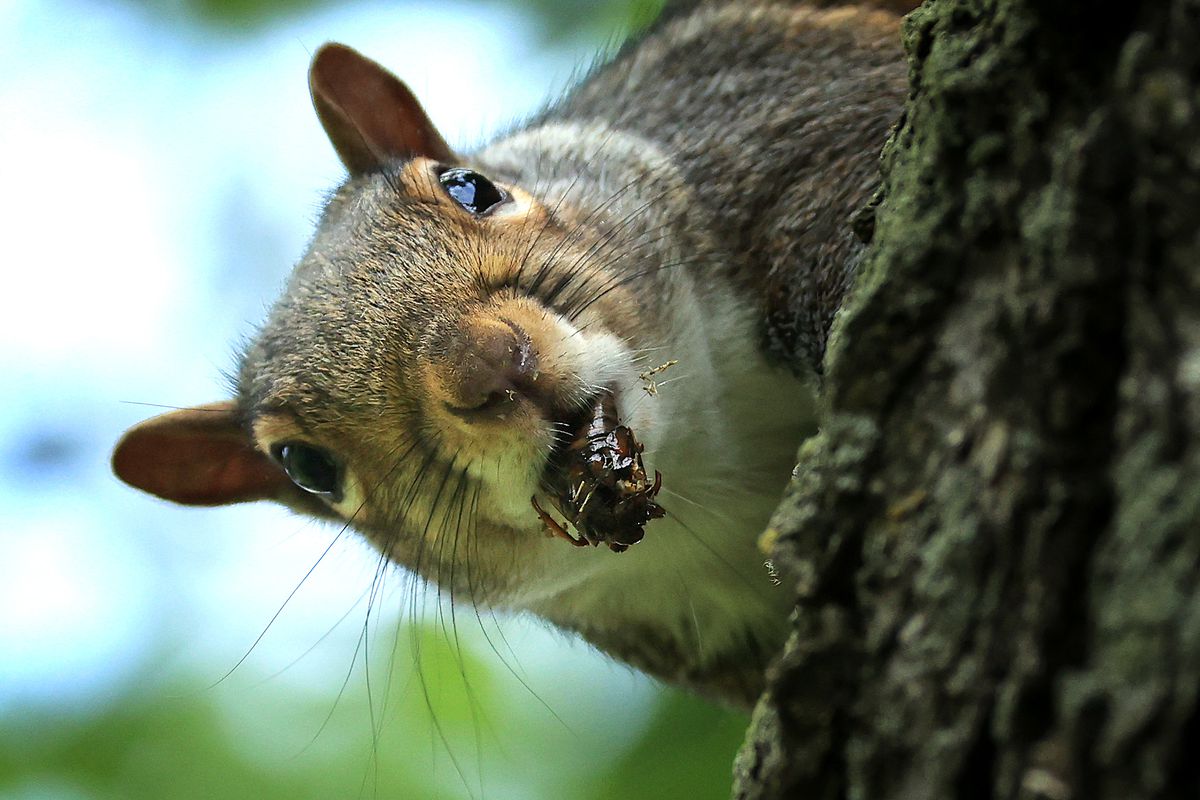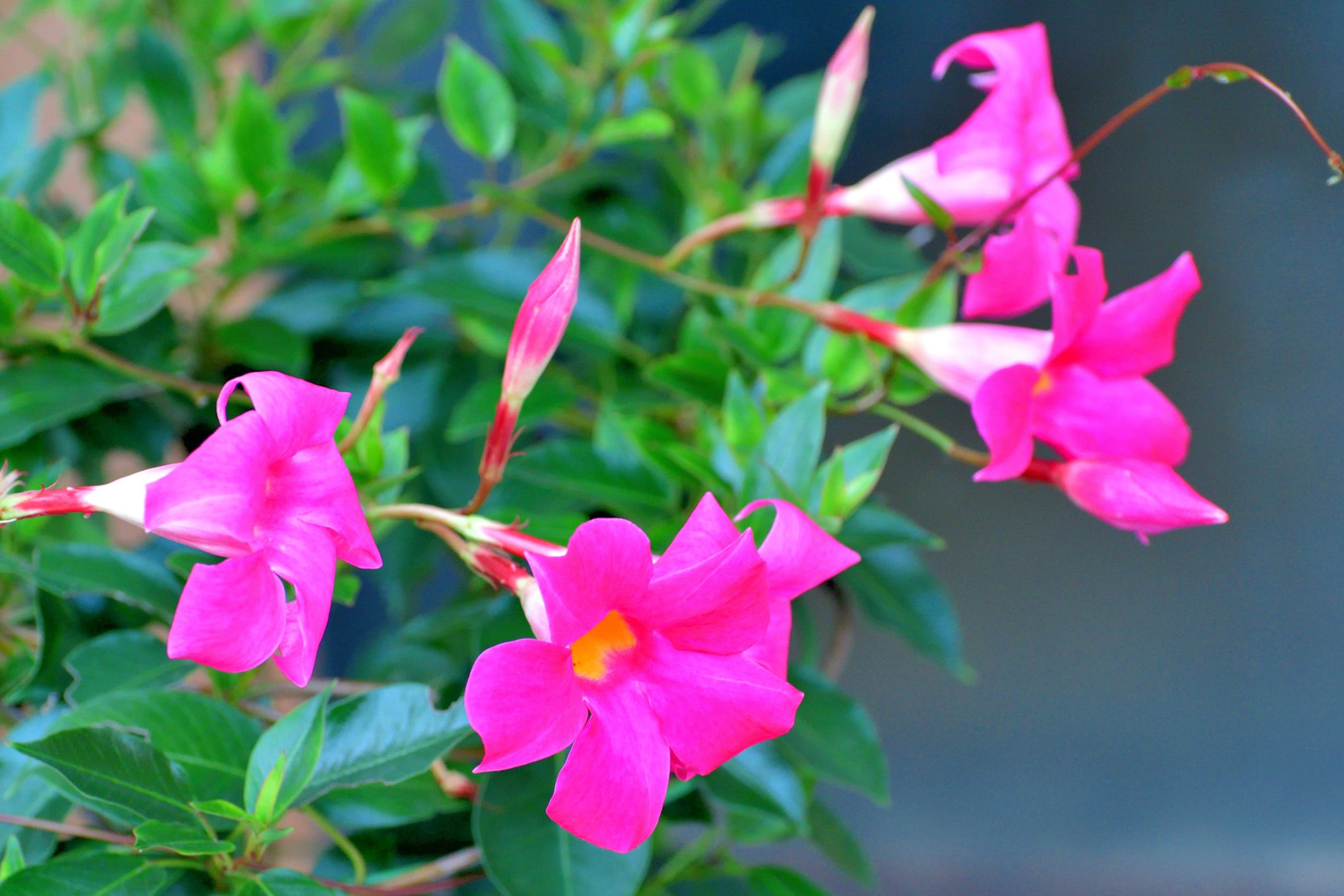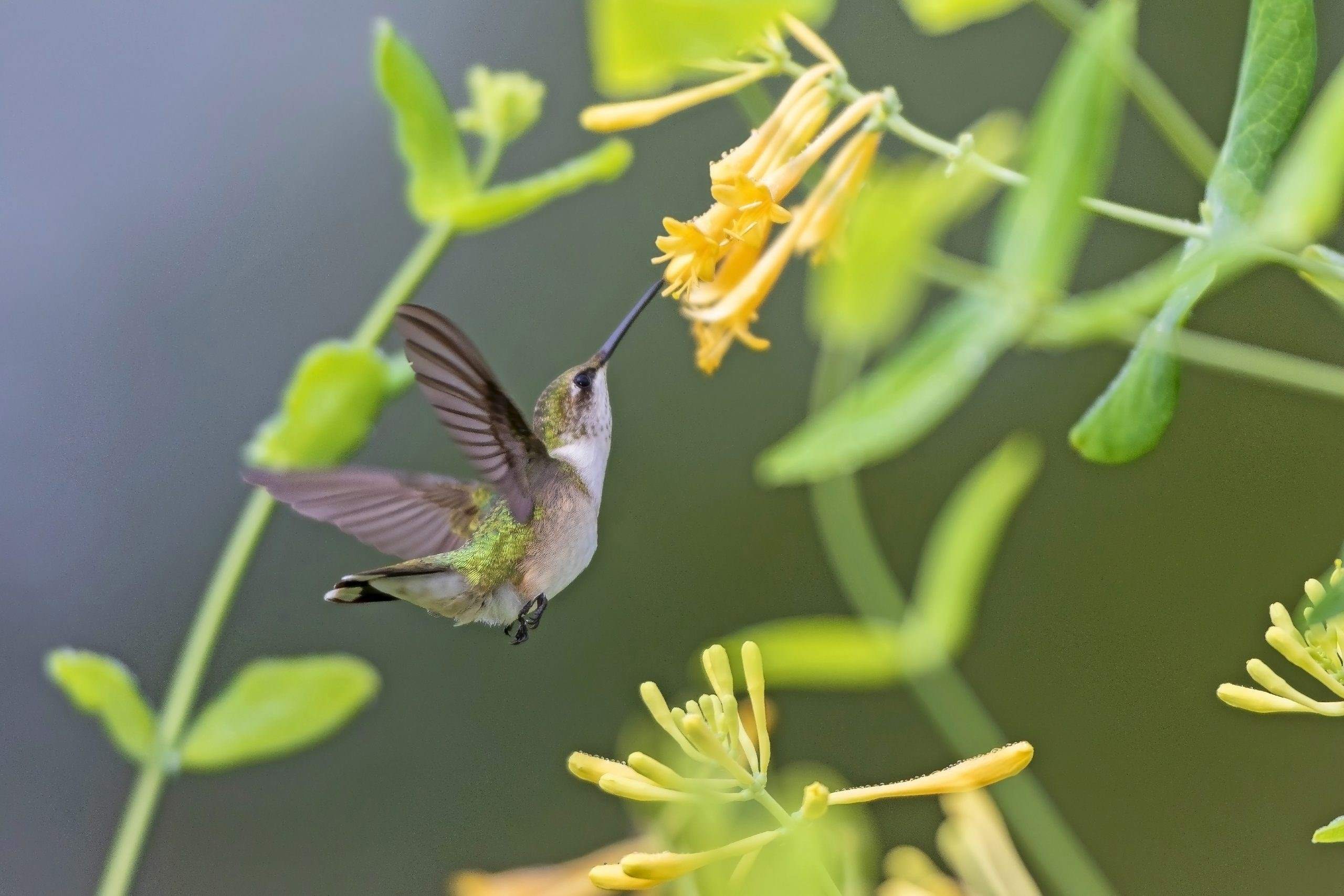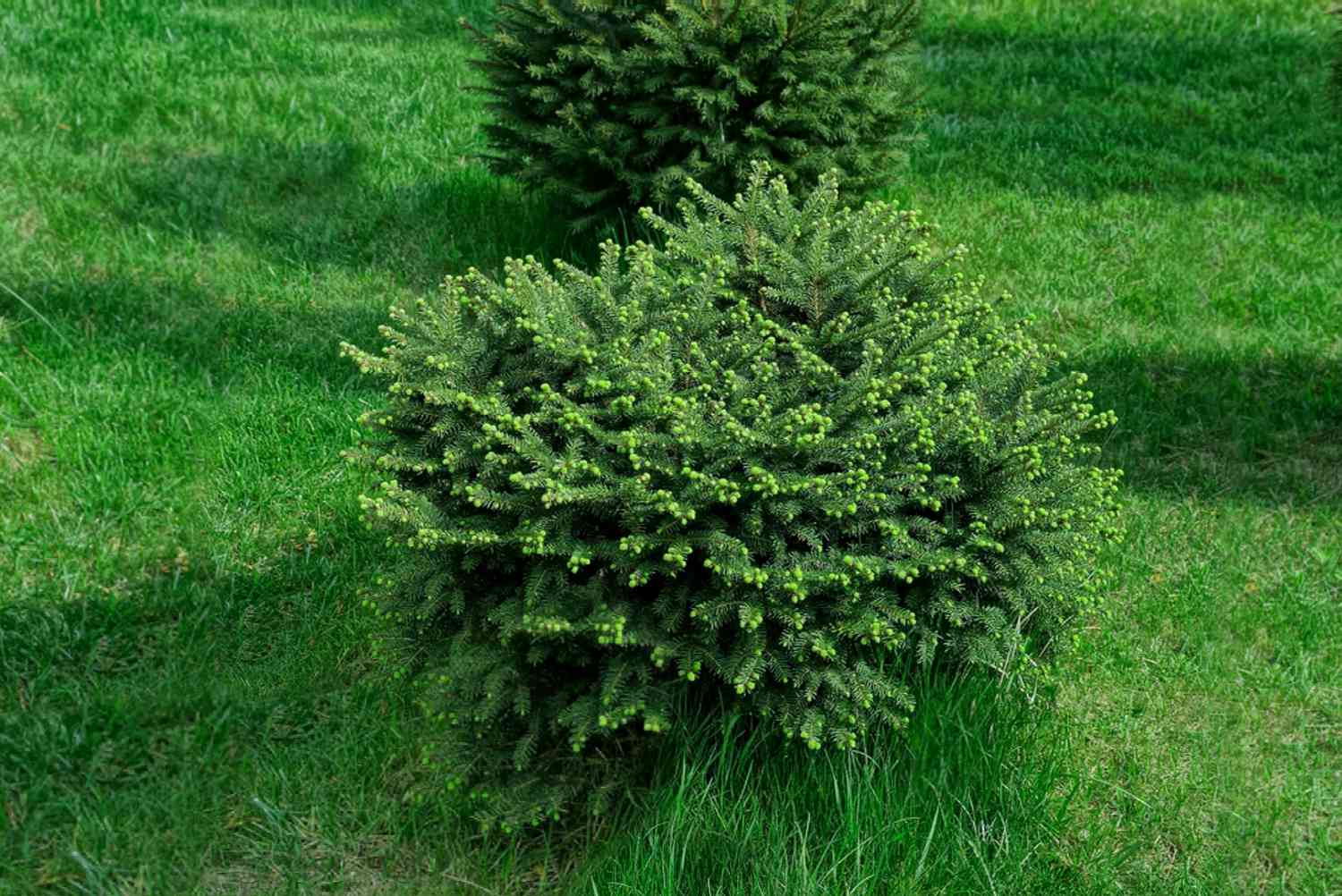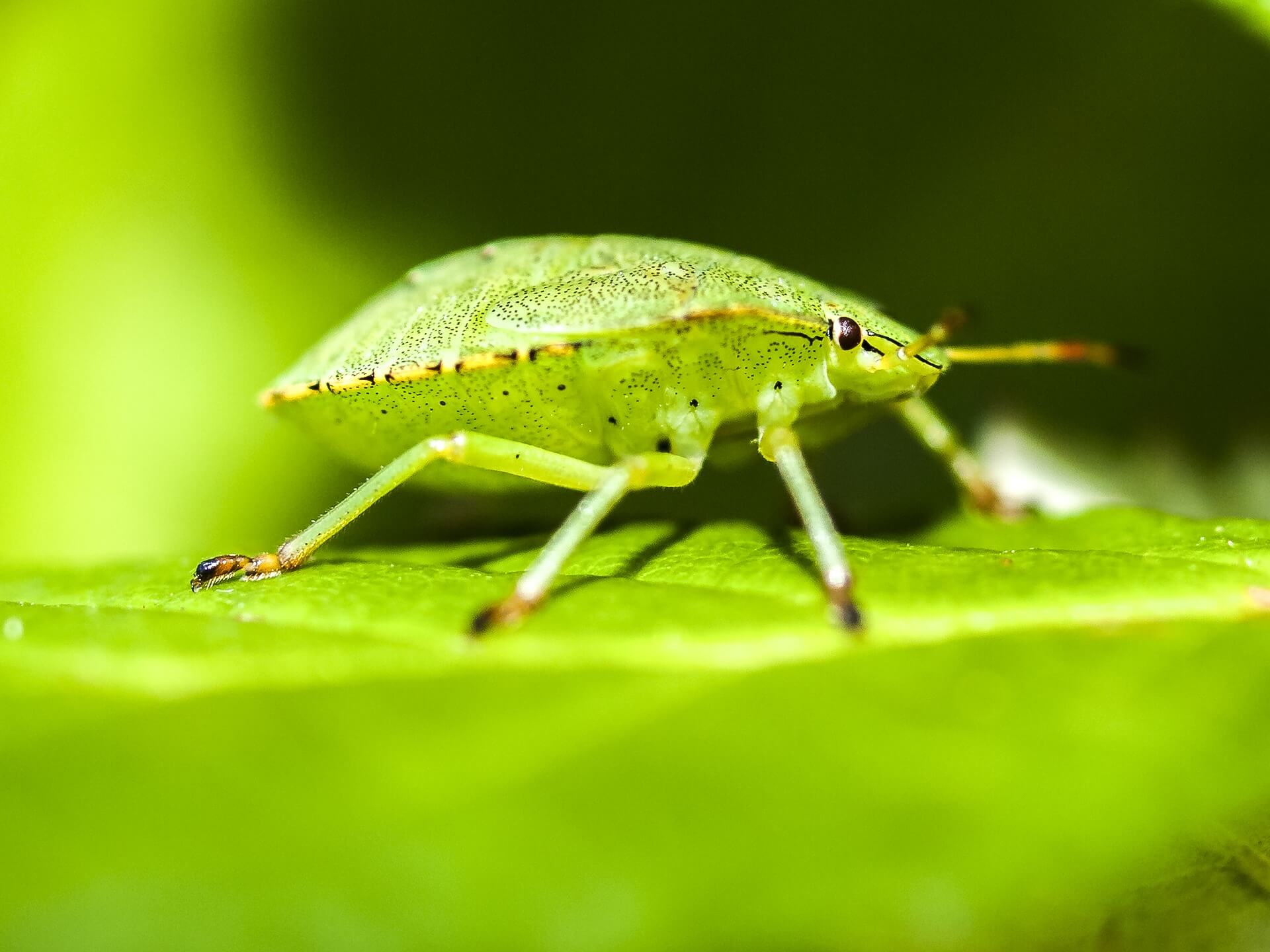Home>Gardening News and Trends>What Kind Of Flowers Do Butterflies Like
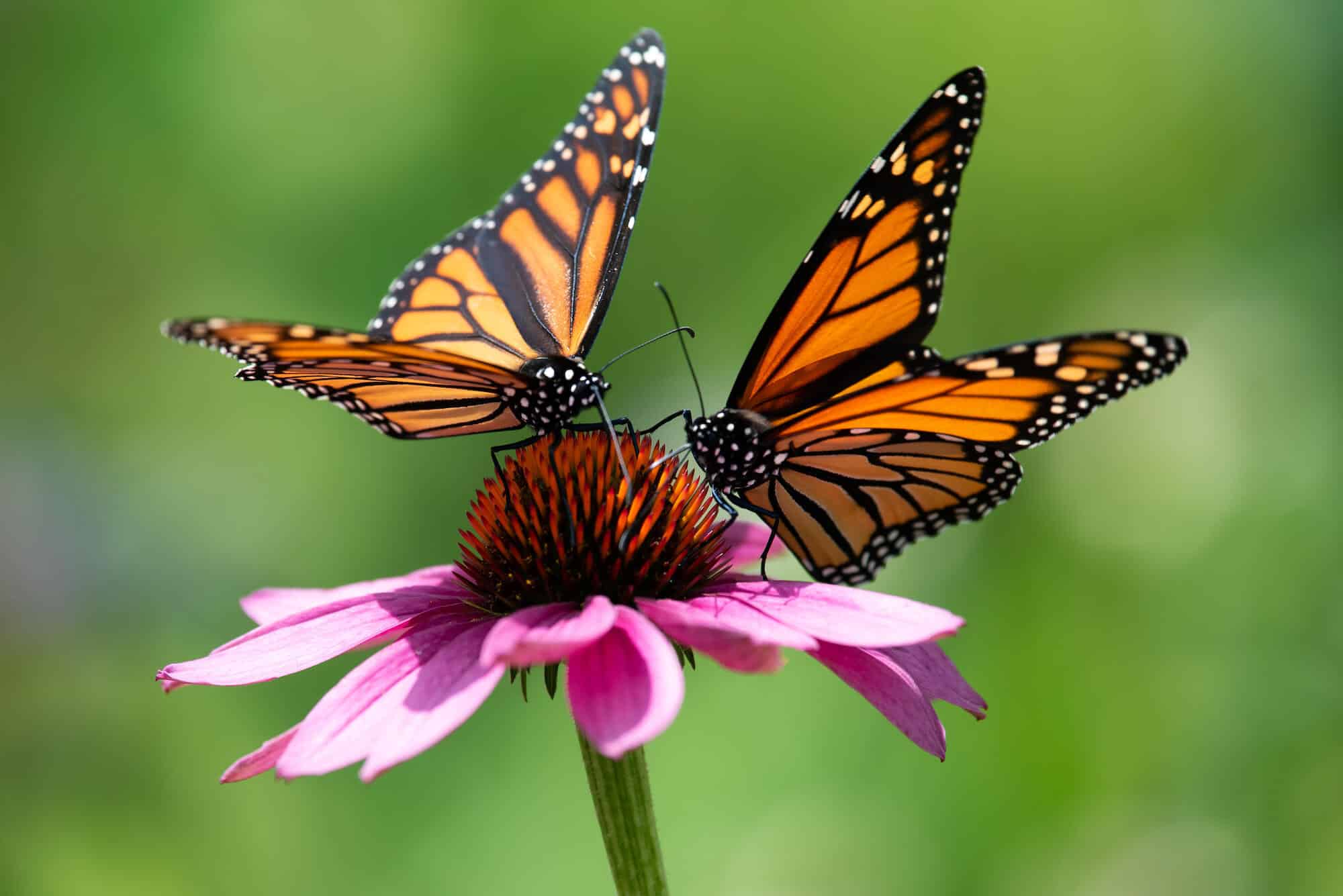

Gardening News and Trends
What Kind Of Flowers Do Butterflies Like
Modified: January 22, 2024
Discover the Latest News on What Kind of Flowers Butterflies Like and Learn How to Create the Perfect Garden to Attract these Beautiful Creatures!
(Many of the links in this article redirect to a specific reviewed product. Your purchase of these products through affiliate links helps to generate commission for Chicagolandgardening.com, at no extra cost. Learn more)
Table of Contents
Introduction
Welcome to the world of butterflies and flowers! Butterflies are not only beautiful creatures that bring joy with their vibrant colors, but they also play a vital role in pollination. As they flit from flower to flower, they inadvertently transfer pollen, aiding in the reproduction of plants. But have you ever wondered what kind of flowers butterflies are particularly attracted to?
Understanding the preferences of butterflies when it comes to flowers is essential for creating a butterfly-friendly environment. By planting the right flowers in your garden or even on a small balcony, you can attract these delicate insects and contribute to their survival.
In this article, we will explore the fascinating relationship between butterflies and flowers, and delve into the factors that attract butterflies to certain types of blooms. We will also discuss the native flowers that butterflies prefer, as well as some popular flowers that are known to captivate these ethereal creatures.
Additionally, we will share some tips on how to create a beautiful and inviting butterfly garden, and design a flower bed that will cater specifically to the needs of these winged wonders.
So, if you’re ready to embark on a journey into the enchanting world of butterflies and their favorite flowers, let’s dive in and discover the secrets that will transform your garden into a haven for these mesmerizing insects.
Importance of Flowers for Butterflies
Flowers play a crucial role in the life cycle of butterflies. These delicate insects rely heavily on nectar as their primary food source. Nectar is a sweet liquid found in flowers that provides butterflies with the essential nutrients and energy they need for survival.
When butterflies land on a flower, they use their long, tube-like proboscis to extract the nectar from the flower’s petals. This act of feeding not only sustains the butterflies but also facilitates the process of pollination.
As butterflies move from one flower to another in search of nectar, they inadvertently pick up pollen grains on their bodies. These pollen grains are then transferred to other flowers as the butterflies continue their feeding journey. By doing so, butterflies effectively act as pollinators, aiding in the reproduction of plants.
The intricate relationship between butterflies and flowers is a perfect example of mutualism, a symbiotic interaction where both species benefit. The butterflies receive nourishment from the flowers, while the flowers benefit from the pollination services provided by the butterflies.
Without flowers, butterflies would struggle to find a consistent and reliable food source. The availability of nectar-rich flowers directly affects the population and diversity of butterflies in an area. Therefore, ensuring that there are plenty of flowers for butterflies to feed on is essential for their survival.
Furthermore, flowers not only provide food for adult butterflies but also serve as habitat and food sources for their caterpillars. Many butterfly species have specific host plants that they rely on for egg-laying and as food for their larvae. By planting these host plants, you can create an environment that supports the entire life cycle of butterflies.
Now that we understand the importance of flowers for butterflies, let’s explore the factors that attract butterflies to certain types of blooms and learn about the native flowers preferred by these fascinating insects.
Factors That Attract Butterflies to Flowers
Butterflies are highly selective when it comes to choosing the flowers they visit. Several factors influence their preference for certain blooms over others. Understanding these factors can help you create a garden that is irresistible to these graceful creatures.
Color is one of the primary factors that attract butterflies to flowers. Butterflies are particularly drawn to bright and vibrant hues such as red, orange, purple, and yellow. These colors stand out in the natural landscape and are easily visible to butterflies as they soar through the air. Flowers with contrasting colors and patterns also catch their attention and provide visual cues to guide them towards the nectar-rich blooms.
Scent or fragrance is another important factor that can entice butterflies. Many flowers emit aromatic scents to attract pollinators, including butterflies. Fragrances can act as long-distance attractants, guiding butterflies to the source of nectar. Flowers with a sweet, fruity, or citrus-like fragrance are especially attractive to butterflies.
The shape and structure of flowers also play a role in attracting butterflies. Butterflies have a long proboscis that allows them to reach deep into tubular flowers to access the nectar. Flowers with a tubular shape, like the ones found in the mint family (Lamiaceae) or the tobacco plant (Nicotiana), are well-suited for butterflies with longer proboscises.
Butterflies also prefer flowers with a flat or open shape, as it provides a stable surface for them to perch and feed. Examples of such flowers include daisies, sunflowers, and zinnias. Additionally, flowers that have a landing platform or landing strip, like milkweeds, make it easier for butterflies to land and navigate the flower.
Another factor that attracts butterflies is the availability of nectar. Flowers that provide a high volume of nectar are more likely to attract these winged visitors. Butterflies have a keen sense of smell and can detect the presence of nectar from a distance. They are more likely to visit flowers that offer a generous and easily accessible supply of nectar.
Lastly, butterflies are sensitive to the availability of flowers throughout their active season. Planting a variety of flowers that bloom at different times of the year ensures a continuous food source for butterflies. By providing flowers that bloom from early spring to late fall, you can attract butterflies at different stages of their life cycle and support their needs throughout the year.
Now that we understand the factors that attract butterflies to flowers, let’s explore the native flowers that are especially preferred by these enchanting insects.
Native Flowers Preferred by Butterflies
When it comes to attracting butterflies, native flowers are often the best choice. Native flowers are those that naturally occur in a particular region and have developed a symbiotic relationship with local pollinators, including butterflies. These flowers have adapted to the local climate, soil conditions, and ecosystem, making them well-suited for the local butterfly species.
Native flowers provide a familiar and reliable source of nectar for butterflies. They offer a diverse range of shapes, colors, and scents that cater specifically to the preferences of local butterfly populations. Planting native flowers is not only beneficial for butterflies but also contributes to the preservation of local ecosystems and promotes biodiversity.
Here are some native flowers that are known to be particularly attractive to butterflies:
- Milkweed (Asclepias): Milkweed is perhaps one of the most well-known native flowers for butterflies. It not only provides nectar for adult butterflies but also serves as a host plant for the monarch butterfly. Monarch butterflies lay their eggs exclusively on milkweed plants, and the caterpillars feed on the leaves. By planting milkweed, you can encourage monarch butterflies to visit your garden and support their lifecycle.
- Purple Coneflower (Echinacea purpurea): This beautiful perennial flower is a favorite among butterflies, attracting species like the painted lady and swallowtail butterflies. Purple coneflower produces vibrant purple petals and a cone-shaped center, providing both nectar and a landing platform for butterflies.
- Black-eyed Susan (Rudbeckia hirta): The bright yellow flowers of black-eyed Susan are irresistible to butterflies, including the Eastern tiger swallowtail and the painted lady. These flowers have a dark center surrounded by yellow petals, creating a visually striking display that butterflies find appealing.
- Joe-Pye Weed (Eutrochium spp.): Joe-Pye weed is a tall flowering plant that blooms in late summer and early fall. Its clusters of pink or purple flowers are highly attractive to butterflies, including the great spangled fritillary and the eastern tiger swallowtail.
- Butterfly Weed (Asclepias tuberosa): As the name suggests, butterfly weed is a magnet for butterflies. With its vibrant orange or yellow flowers, it attracts species like the monarch butterfly, swallowtails, and fritillaries. This native perennial also serves as a host plant for monarch butterfly larvae.
These are just a few examples of native flowers that butterflies find particularly appealing. When selecting native flowers for your garden, it’s always beneficial to do some research on the local butterfly species and their preferred plants. This will help you create an environment that caters specifically to the needs and preferences of the butterflies in your area.
Now that we have explored the native flowers preferred by butterflies, let’s move on to discover some popular flowers that are beloved by these enchanting insects.
Popular Flowers that Butterflies Love
While native flowers are ideal for attracting butterflies, there are also several popular flowers that these winged beauties simply can’t resist. These flowers not only add beauty to your garden but also provide a rich source of nectar that entices butterflies to flutter their way into your yard.
Here are some popular flowers that butterflies love:
- Zinnia: Zinnias are annual flowers that come in a wide range of vibrant colors. Their daisy-like blooms are a favorite among butterflies, especially the swallowtail and painted lady species. Planting a variety of zinnias in different colors will create a stunning visual display and attract an array of butterfly visitors.
- Bee Balm (Monarda): Bee balm is known for its showy flowers that come in shades of red, pink, and purple. These flowers have a unique tubular shape and are particularly attractive to butterflies and hummingbirds. The bright colors and abundance of nectar make bee balm a must-have for any butterfly garden.
- Lantana: Lantana is a popular flowering plant that produces clusters of small, colorful blooms. The flowers often change color as they mature, creating an eye-catching display. Lantana attracts a wide variety of butterflies, including swallowtails, painted ladies, and skippers.
- Pentas: Pentas are compact, bushy plants that produce clusters of star-shaped flowers in shades of red, pink, and white. These flowers have a sweet nectar that butterflies find irresistible. By planting pentas, you can ensure a steady stream of butterfly visitors throughout the blooming season.
- Salvia: Salvias are a diverse group of flowering plants that come in various sizes and colors. They are loved by butterflies, particularly the black swallowtail and the eastern tiger swallowtail. Salvias offer an abundant supply of nectar and have tubular flowers that are perfectly suited for butterflies with long proboscises.
These popular flowers not only attract butterflies but also enhance the visual appeal of your garden. By incorporating these blooms into your landscape, you can create a haven for butterflies and enjoy the delightful presence of these enchanting insects.
Remember, it’s important to provide a variety of flowers that bloom at different times of the year to cater to the changing needs of butterflies. Planting a combination of native flowers and popular butterfly favorites will ensure a continuous supply of nectar and support the well-being of these delicate creatures.
Now that we have explored the popular flowers that butterflies love, let’s move on to understanding how to create a butterfly garden that will make butterflies feel right at home.
Creating a Butterfly Garden
Creating a butterfly garden is a rewarding and fulfilling endeavor that will not only attract these magnificent insects but also add beauty to your outdoor space. Here are some essential steps to follow when creating your own butterfly garden:
- Research local butterfly species: Start by researching the butterfly species that are native to your region. Learn about their habitat requirements, preferred host plants for larvae, and the flowers they are attracted to for nectar. This knowledge will guide you in selecting suitable plants for your butterfly garden.
- Choose a sunny location: Butterflies thrive in sunny areas. Choose a spot in your garden that receives at least six hours of direct sunlight each day. This will ensure that the flowers you plant have sufficient light to grow and produce abundant nectar.
- Select a variety of flowers: Aim for a diverse selection of flowers that bloom at different times of the year. This will provide a continuous source of nectar for butterflies throughout their active season. Include a mix of native flowers and popular butterfly favorites to attract a wide range of species.
- Plant host plants: Host plants are crucial for butterfly reproduction as they provide a suitable environment for egg-laying and serve as food for butterfly larvae or caterpillars. Research the host plants preferred by the butterfly species in your area and include them in your garden. For example, milkweed is a host plant for monarch butterflies.
- Provide water sources: Butterflies also need access to water for drinking and puddling. Create shallow dishes or place stones in your garden where butterflies can perch and sip water. Adding a birdbath or a small fountain is another effective way to provide a water source for butterflies.
- Avoid pesticides: Pesticides can harm butterflies and other beneficial insects. Instead, adopt organic pest control methods and embrace the natural balance of predators and pests in your garden. This will help maintain a healthy ecosystem and protect the butterflies that visit your garden.
- Provide shelter: Butterflies need sheltered areas to rest and seek protection from adverse weather conditions. Planting shrubs or small trees around your garden will provide shelter for butterflies while also adding structure and diversity to your landscape.
- Keep the garden clean: Regularly remove weeds and dead plant material to keep your garden clean and free from debris. This will create a healthier environment for butterflies and prevent the buildup of pests or diseases.
- Observe and enjoy: Once your butterfly garden is established, take the time to observe and enjoy the fascinating interactions between butterflies and flowers. Grab a comfortable chair, a pair of binoculars, and marvel at these delicate creatures as they flutter and feed in your garden.
Creating a butterfly garden is a commitment to supporting and conserving these important pollinators. By providing a suitable habitat with a variety of flowers, host plants, and water sources, you can transform your garden into a haven for butterflies.
Now that we have covered the key steps in creating a butterfly garden, let’s move on to designing a flower bed that is specifically tailored to the needs of butterflies.
Designing a Butterfly-Friendly Flower Bed
Designing a flower bed that is specifically catered to the needs of butterflies is a wonderful way to create a visually appealing and welcoming environment for these graceful insects. Here are some tips to help you design a butterfly-friendly flower bed:
- Create different heights: Incorporate plants of varying heights in your flower bed to provide different perching and feeding options for butterflies. Include tall flowers like sunflowers or hollyhocks towards the back, medium-height plants in the middle, and low-growing flowers at the front.
- Group flowers together: Plant flowers of the same species in clusters or drifts rather than scattering them throughout the bed. This makes it easier for butterflies to spot and access the nectar-rich blooms. Grouping flowers also creates a more visually striking display.
- Include a variety of flower shapes: Incorporate flowers of different shapes and sizes to accommodate the preferences of different butterfly species. Include tubular flowers for butterflies with long proboscises, flat or open flowers for ease of landing, and composite flowers that provide a wide landing area.
- Choose a diverse color palette: Opt for a diverse range of flower colors to attract a variety of butterfly species. Include flowers in vibrant hues like red, orange, yellow, and purple. The contrast of colors will not only be visually appealing but also make your garden more noticeable to passing butterflies.
- Extend the blooming season: Select flowers that bloom at different times of the year to ensure a continuous nectar source for butterflies. Include early spring bloomers, summer-flowering plants, and fall-blooming flowers to support butterflies throughout their entire active season.
- Plant for all life stages: In addition to nectar-producing flowers, include host plants that cater to the needs of butterfly larvae. Incorporate plants like milkweed, parsley, or dill that serve as host plants for specific butterfly species. By providing both nectar and host plants, you will create a complete habitat for butterflies.
- Add butterfly-friendly features: Incorporate additional features in your flower bed that are attractive to butterflies. Install a butterfly house or butterfly feeder to provide extra shelter or food sources. You can also include flat rocks or logs for butterflies to rest and bask in the sun.
- Practice sustainable gardening: Avoid the use of pesticides and synthetic fertilizers in your flower bed, as they can harm butterflies and other beneficial insects. Embrace organic gardening methods and focus on creating a natural and healthy ecosystem for butterflies and plants to thrive.
- Maintain the flower bed: Regularly maintain your butterfly-friendly flower bed by deadheading spent blooms, removing weeds, and providing adequate water. This will ensure the health and vitality of your flowers and create an inviting space for butterflies.
Designing a flower bed that is specifically tailored to the needs of butterflies will not only attract these captivating insects but also provide you with a beautiful and enchanting garden. By incorporating these tips into your design, you can create a haven that supports the entire life cycle of butterflies.
Now that we have explored the essentials of designing a butterfly-friendly flower bed, let’s wrap up our journey through the world of butterflies and flowers.
Conclusion
Butterflies and flowers have a beautiful and mutually beneficial relationship. By understanding the factors that attract butterflies to flowers, and by planting the right types of blooms, we can create a welcoming environment for these enchanting insects in our own gardens.
We have explored the importance of flowers for butterflies and the vital role they play in the process of pollination. Nectar-rich flowers not only provide sustenance for adult butterflies but also serve as host plants for their larvae, supporting the entire life cycle of these delicate creatures.
Native flowers are particularly effective in attracting butterflies, as they have evolved alongside local butterfly species. By planting native flowers, we can provide a familiar and reliable food source for butterflies while also promoting the preservation of local ecosystems and biodiversity.
In addition to native flowers, popular flowers such as zinnias, bee balm, lantanas, pentas, and salvias also have a strong appeal for butterflies. Including these beloved blooms in our garden not only attracts butterflies but also adds visual splendor to our outdoor spaces.
To create a butterfly garden, it is important to provide the necessary elements that butterflies require. This includes selecting a sunny location, planting a variety of flowers that bloom at different times, incorporating host plants for larvae, and providing water sources and shelter.
By designing a flower bed specifically tailored to the needs of butterflies, we can maximize their presence and create a haven for these magnificent insects. Through thoughtful plant selection, creating different heights, grouping flowers together, and maintaining a diverse color palette, we can create an inviting space that entices butterflies to visit and thrive.
Lastly, practicing sustainable gardening, avoiding the use of pesticides, and maintaining a clean and well-kept garden not only ensures the health of butterflies but also safeguards the overall ecosystem and encourages the presence of other beneficial insects.
So, let us embark on the journey of creating butterfly-friendly gardens, where the vibrant colors of flowers and the graceful flutter of butterflies come together in perfect harmony. By attracting butterflies to our gardens, we can witness their beauty up close and contribute to the conservation of these amazing creatures.
